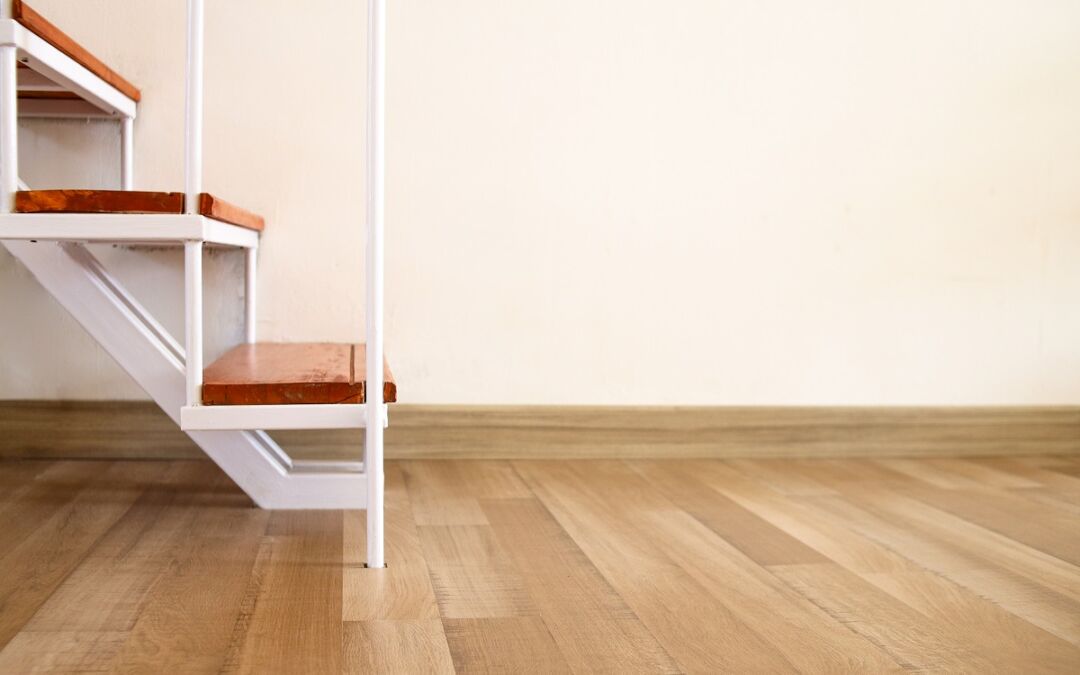If you’re interested in updating your staircase with new luxury vinyl flooring, this guide will tell you how to install vinyl plank flooring on stairs in just a few steps. The process may seem intimidating at first but it’s not as difficult as what many assume. Once you have the right tools and an understanding of the steps you must follow, you can complete this project on your own.
Tools and Materials
In order for your vinyl plank flooring installation to be a success, you will need all of the right tools and materials for the job. This includes a caulk gun, jigsaw, fine-tooth blade, tape measure, carpenter square and drill or nail gun. You will also need screws or nails, construction adhesive, vinyl plank flooring and stair nosing.
Preparation
You will need to prepare your stairs before you install vinyl planks. Additionally, you will need to let your vinyl planks acclimate to your space for up to 48 hours which means you will have lots of time to prepare.
- Start by removing any existing molding or trim around the stairs.
- Ensure there is room for the stair nose which is the top edge trim of the stair. You will have to remove stair overhangs using a jigsaw and will also have to cut back the baseboards to do this.
- Ensure the stairs and any landings are level without any bumps. Caulking can be used to level out cracks or bumps like exposed screws for example.
- Sweep or vacuum up any dirt or dust.
Installing Vinyl Plank Flooring on Stairs
Always start from the bottom of the staircase and work your way up.
Installing a stair riser
Typically speaking, a stair riser is the vertical surface of each stair. The first thing you have to do is determine if you want to install vinyl planks on this surface or if you want to give it another treatment like staining or painting it in a coordinating color.
If you choose to install vinyl flooring on each stair riser, you will have to measure the length and height of the riser and cut a vinyl plank to fit. Next, you’ll have to spread adhesive on the back of the plank and firmly press it against the riser. You will then have to fasten the corners and edges with screws or nails to ensure the plank remains secure as the adhesive dries. Fasteners should not be installed in the middle of the plank because they will be more visible.
You should measure and cut the tread along with the stair nose. The tread is the flat part of the stair on which you walk and the stair nose is a piece of trim used on the top edge of each stair. The stair nose creates a more polished appearance and also makes your stairs safer. Some stair treads come with the stair nose built-in which means you’ll only have to work with a single piece. This will save you a lot of time and the installation process will be a lot easier.
Now, measure the bottom stair tread and determine if it is square. If they are not, you may have to cut the edges at an angle to ensure the corners fit. Always account for the width of the stair nose when you measure the depth of the tread because you will need to cut the vinyl plank short enough to make sure the stair nose fits exactly on the edge of the stair.
Additionally, always dry lay the tread and nosing to make sure everything fits before you install it.
Installing a stair tread
Once you confirm everything fits perfectly, it is time to install and you have to start by applying adhesive to the back of the stair tread and laying it in place and pressing down firmly as you do so. Install nails or screws in the corners and along the back edge where they will be less obvious.
Installing a stair nose
This step will depend on the type of nosing you have. There are two kinds and the first type snaps over the vinyl plank while the second type requires a strip of wood called a shim. You will need to determine which kind of stair nose you have and must follow the directions accordingly.
If you don’t need a shim, just spread adhesive onto the nosing and fit it over the tread to cover the edge of the stair. If you do need a shim, glue down the shim over the bare edge of the stair and then glue the nosing on top of that. Drive four or five fasteners along the length of the nosing and keep them an inch from the edge of the tread.
Repeat all of these steps until the stairs are complete and remember; work your way up and not down.
Installing vinyl planks on a landing
You can follow the same directions that you would with a standard floor but you will need to add a stair nose along with the edge first.
Measure the dimensions of your landing and calculate how many rows you need based on this information. You may need to cut the final row of planks to fit along the wall. Next, cut the planks to fit and do a dry lay to make sure everything fits together before you permanently install anything. Install the first full plank and the stair nose at the edge of the landing first, then work your way back to the wall. These planks should be glued down and not floated.
Do you prefer having your flooring installed by professionals? Milton Hardwood can help! We offer vinyl wood flooring and installation and our team will provide you with beautiful new flooring. We serve clients in the Milton, Oakville and Burlington areas and are always available to answer flooring questions.
Vinyl wood flooring is a great option for your home and we will discuss all of the benefits you will get to enjoy.
Contact us today to find out more about our flooring products and installation services!






